- Products
- ProspectSQL/MQL list building with high levels of personalization, real-time data enrichment and prospect search
- Email FinderFind individual or bulk emails by entering the person & company name or domain
- Email VerifierVerify emails addresses individually, in bulk or through API, with 99% accuracy
- Clearout For SheetsVerify email addresses directly on Google Sheets with Clearout for sheets add-on
- ClearoutPhoneValidate phone numbers across 240+ countries in bulk, quick or real time validation Free Tools
- Disposable Email Checker
- Reverse LinkedIn Profile Lookup Tool
- Reverse Email Lookup Tool
- Email List Cleaner
- Resource
- Pricing
- Integrations
- Enterprise
- Login
8 Email Personalization Techniques That Work for Every Marketer
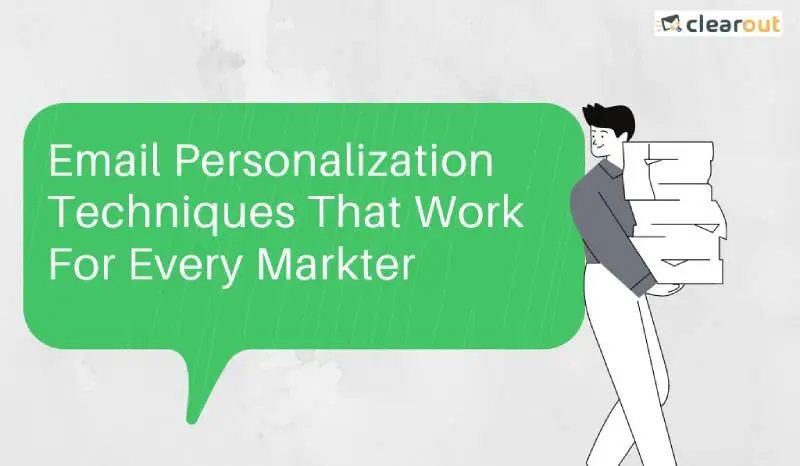
Standing out in a crowd is the philosophy of email personalization. People may ignore your emails if they don't contain something distinctive among the hundreds they receive every day.
Personalized emails attract greater attention and are more likely to be clicked on by the receiver. Once they've gotten to know you, they'll look forward to hearing from you in the future.
Businesses witnessed a 56 percent increase in revenue from generic to personalized communications. It's no wonder that every business and brand wants to be the first to capitalize on the B2B email personalization.
Personalized emails attract greater attention and are more likely to be clicked on by the receiver. Once they've gotten to know you, they'll look forward to hearing from you in the future.
Businesses witnessed a 56 percent increase in revenue from generic to personalized communications. It's no wonder that every business and brand wants to be the first to capitalize on the B2B email personalization.
What is Personalization in Email Marketing?
Email personalization is all about making your email campaigns more focused and relevant to individual customers or clients. It's a wide term that spans a range of complexity levels.
The simplest example of email customization is the inclusion of a subscriber's name in the subject line. More extreme tactics, on the other hand, may involve changing the email's content based on a subscriber's gender, location, or other information you have.
Personalization in email marketing has been proven to increase open and click-through rates while also increasing ROI and revenue. Emails with personalized subject lines are 26% more likely to be opened than those without.
The simplest example of email customization is the inclusion of a subscriber's name in the subject line. More extreme tactics, on the other hand, may involve changing the email's content based on a subscriber's gender, location, or other information you have.
Personalization in email marketing has been proven to increase open and click-through rates while also increasing ROI and revenue. Emails with personalized subject lines are 26% more likely to be opened than those without.
Undeniable Benefits of Personalized Emails
In the world of e-commerce, personalization in email marketing is undeniably a force to be reckoned with!
“Personalized emails increase click-through rates by 18% and conversion rates by 5%.” - Segmentify
“Marketers see an average increase of 20% in sales using email personalization techniques.” – Monetate
Given those staggering proportions, it's evident that personalised emails are critical; consumers enjoy being treated as individuals. The following are some of the advantages of email personalization:
“Personalized emails increase click-through rates by 18% and conversion rates by 5%.” - Segmentify
“Marketers see an average increase of 20% in sales using email personalization techniques.” – Monetate
Given those staggering proportions, it's evident that personalised emails are critical; consumers enjoy being treated as individuals. The following are some of the advantages of email personalization:
a.) Improves the quality of your emails
Inboxes are notorious for being clogged with emails. As a result of personalisation, the narrative transforms for the better. Marketers had no option but to raise their email's "number game" in order to achieve maximum success in a world where customization had yet to come.
By sending half as many emails, they might see a 2x to 3x increase in outcomes. This is due to the fact that personalization allows them to deliver targeted messages based on the client's profile and persona, substantially boosting the relevancy of their communications.
By sending half as many emails, they might see a 2x to 3x increase in outcomes. This is due to the fact that personalization allows them to deliver targeted messages based on the client's profile and persona, substantially boosting the relevancy of their communications.
b.) Significantly lowers unsubscription rate
Nobody likes getting emails that aren't relevant to them. If you send an email to a person in Canada promoting a deal at a London store, the individual is likely to unsubscribe. Customers who receive emails on items or material that is relevant to their interests, on the other hand, will eagerly await your emails.
Hence, maintaining a good database for each customer and personalizing your emails based on the relevant data can lower unsubscription rates.
Hence, maintaining a good database for each customer and personalizing your emails based on the relevant data can lower unsubscription rates.
c.) Reduces operational cost
Marketing communications can be time-consuming and costly. It's tough to address a large audience with a limited vocabulary. That means you'll have to spend some time figuring out what tone and words to use. Furthermore, the planning and editing of email campaigns, as well as their delivery through appropriate channels, need a significant amount of manual effort and time.
Set up automated email campaigns to eliminate human effort. Personalized emails deliver dynamic content based on real-time information acquired from recipients' online activity. Simply design the campaign and let it run its course.
Personalized emails will recognise the most relevant items for each consumer and send them out at the right moment, saving you time and effort.
Set up automated email campaigns to eliminate human effort. Personalized emails deliver dynamic content based on real-time information acquired from recipients' online activity. Simply design the campaign and let it run its course.
Personalized emails will recognise the most relevant items for each consumer and send them out at the right moment, saving you time and effort.
d.) Strengthen customer relationships
Sending emails with the proper content strengthens customer relationships and has been shown to have a "significant" impact. Personalization in email marketing opens up additional avenues for interaction with clients, resulting in increased income over time.

Personalization initiatives benefit 87 percent of marketers, with the top benefits being increased conversion rates, enhanced customer experience, and more customer engagement.
e.) Boosts conversion rate
Businesses who use email customization strategies have a four-fold higher conversion rate than the average eCommerce conversion rate reported by Google Analytics. On Google Analytics, the conversion ratio is calculated by dividing total transactions by total unique sessions received from various marketing sources.
Consumers who receive personalised email campaigns are four times more likely to purchase than customers who receive other marketing channels since they are already provided with the most relevant products and can make an immediate decision.
Consumers who receive personalised email campaigns are four times more likely to purchase than customers who receive other marketing channels since they are already provided with the most relevant products and can make an immediate decision.
Personalized emails tend to generate six times more sales than generic email campaigns
Personalized email content based on onsite data from each customer can generate a six-fold increase in revenue compared to standard bulk emailing efforts. Each customer's onsite history informs the products recommended in tailored communications. Thus, they're chosen individually, depending on their interests. To put it another way, customers enjoy what they see and buy.
Personalized email campaign sessions also tend to last shorter as the customers can directly go to their desired product page on your website and proceed to checkout.
Personalized email campaign sessions also tend to last shorter as the customers can directly go to their desired product page on your website and proceed to checkout.
Segmentation- The Base of Every Email Personalization Technique
Segmented and targeted emails bring in 58% of all revenue. – DMA
The first step in developing a customised email is to segment the target demographic. The technique of segmenting the in-hand audience into separate groups based on geography, gender, interests, preferred time to view emails, and other factors is known as segmenting.
Segmented data campaigns resulted in a 14.37 percent boost in open rates and a remarkable 67.48 percent increase in clicks, according to a survey of Mailchimp users.
We came to the conclusion that creating discrete groups of clients with different communication methods is critical. The difficulty is, how should these groups be formed in the first place? When you look at your clients' purchase habits more closely, segmentation appears to be a lot easier. Asking consumers 'yes' or 'no' questions, for example, might help you learn more about what they're interested in. Using these facts to guide them around your website can help them get more familiar with your products or services. It's time to start customising for each of those areas once you've sorted out the possibilities.
By allowing you to engage with your consumers through hyper-personalized emails, email list segmentation allows you to provide extraordinary client experiences.
The first step in developing a customised email is to segment the target demographic. The technique of segmenting the in-hand audience into separate groups based on geography, gender, interests, preferred time to view emails, and other factors is known as segmenting.
Segmented data campaigns resulted in a 14.37 percent boost in open rates and a remarkable 67.48 percent increase in clicks, according to a survey of Mailchimp users.
We came to the conclusion that creating discrete groups of clients with different communication methods is critical. The difficulty is, how should these groups be formed in the first place? When you look at your clients' purchase habits more closely, segmentation appears to be a lot easier. Asking consumers 'yes' or 'no' questions, for example, might help you learn more about what they're interested in. Using these facts to guide them around your website can help them get more familiar with your products or services. It's time to start customising for each of those areas once you've sorted out the possibilities.
By allowing you to engage with your consumers through hyper-personalized emails, email list segmentation allows you to provide extraordinary client experiences.
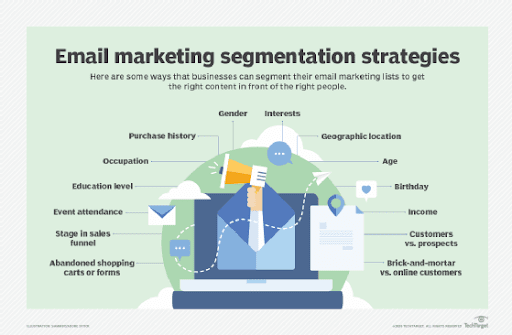
Best Email Personalization Techniques That Work Everytime
When implemented correctly, email personalization techniques can make your consumers feel valued, and valued customers are more inclined to buy from you.
Here we have covered the basics of advanced personalization techniques and discussed how to apply them in your campaigns:
Here we have covered the basics of advanced personalization techniques and discussed how to apply them in your campaigns:
1. Using Name
Using the recipient's first name is one of the most basic and prevalent email personalization techniques. It is bound to get their attention, but be careful not to overdo it.
72% of consumers say they only respond to messages aimed directly at them.
When they sign up for your email list, a prompt to enter their name adds a personal touch to the email copy. This email from Red Lobster demonstrates personalization using names:
72% of consumers say they only respond to messages aimed directly at them.
When they sign up for your email list, a prompt to enter their name adds a personal touch to the email copy. This email from Red Lobster demonstrates personalization using names:

2. Subject line
Emails with personalized subject lines are 26% more likely to be opened. After all, subject lines are the first thing your recipients see when receiving your emails. This makes it one of the most important aspects of email marketing.
The subject lines vary depending on the industry and audience. They need to be engaging, catchy, and intriguing while nudging towards personalization.
Avoid titles that make it look like spam. Instead of making the subject generic, including a piece of information that shows it was explicitly meant for your prospect will increase the chances of your emails getting opened.
The subject lines vary depending on the industry and audience. They need to be engaging, catchy, and intriguing while nudging towards personalization.
Avoid titles that make it look like spam. Instead of making the subject generic, including a piece of information that shows it was explicitly meant for your prospect will increase the chances of your emails getting opened.

3. Behavioral trigger email
It's sad to see a potential buyer leave the website or app after adding something to the cart. Personalization can help you get that buyer back by implementing behavioral trigger email.
Customers' interactions with your products or services prompt automated responses in the form of behavior-triggered emails. It reminds them of what they missed out on!
Sending them a reminder, offering a coupon for the abandoned items, or assisting them to see what trouble they ran into while placing the order can get their attention back.
If a customer has not logged in for a long time, behavior-triggered emails can also re-engage them. Email can be sent to tell them that they are missed or offer discounts to take them back to your website.
Compared to standard emails, trigger emails have a 152% greater open rate. They are an effective communication tool that converts passers-by into loyal customers.
Customers' interactions with your products or services prompt automated responses in the form of behavior-triggered emails. It reminds them of what they missed out on!
Sending them a reminder, offering a coupon for the abandoned items, or assisting them to see what trouble they ran into while placing the order can get their attention back.
If a customer has not logged in for a long time, behavior-triggered emails can also re-engage them. Email can be sent to tell them that they are missed or offer discounts to take them back to your website.
Compared to standard emails, trigger emails have a 152% greater open rate. They are an effective communication tool that converts passers-by into loyal customers.
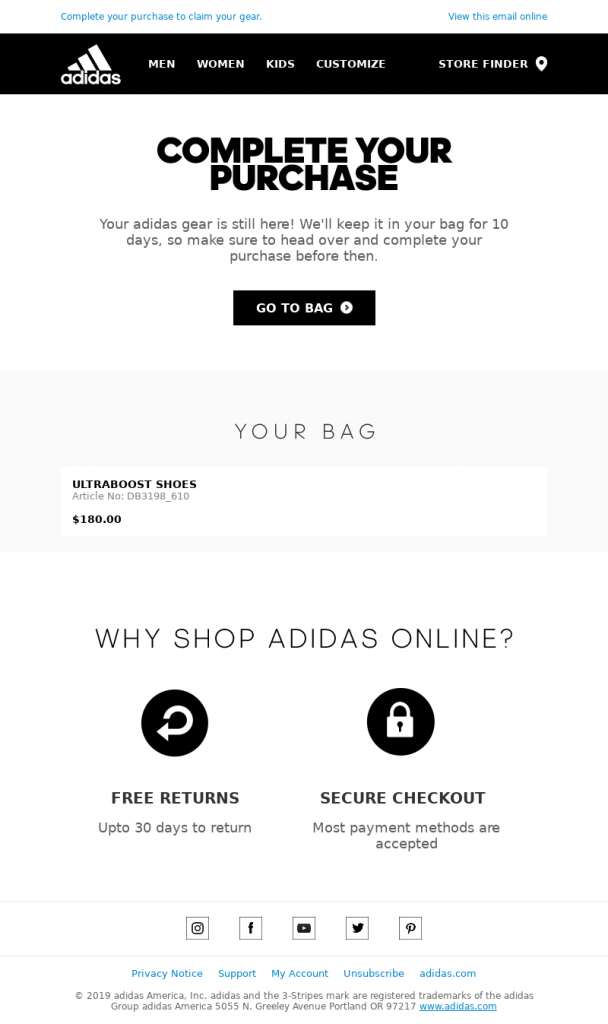
4. Email signature
An email signature is another approach to build a good rapport by adding details about the sender to feel familiar with the company. The final piece of the sales puzzle might be your email signature.
A well-designed, professional email signature boosts engagement and credibility. Your website URL is right there in front of them, mentioned in your signature template, so they don't have to go searching for your brand.
However, your email signature should be professional, well-optimized, and engaging, not just overloaded with irrelevant information.
A well-designed, professional email signature boosts engagement and credibility. Your website URL is right there in front of them, mentioned in your signature template, so they don't have to go searching for your brand.
However, your email signature should be professional, well-optimized, and engaging, not just overloaded with irrelevant information.
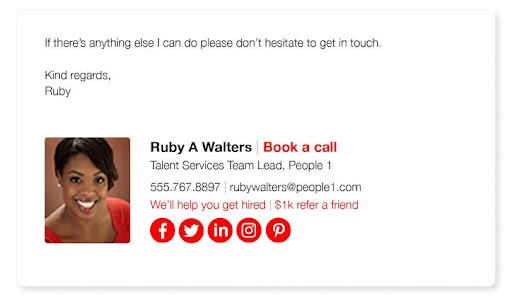

5. Recommended for you
Recommendation emails always get attention. We hardly ever miss out on clicking on any notification or emails that recommend more of what we like. For example:
Based on the customer's past purchases or what they have been browsing for a long time, recommend your customers more products. You can send them a list of relevant items, including the price and delivery time.
Suppose you are a website that sells movie tickets. In that case, you could try and send emails for upcoming movies, along with their trailers, to increase the conversion rate and provide information regarding the movie. It will get customers to come back to your website and check out the movie tickets from there.
Based on the customer's past purchases or what they have been browsing for a long time, recommend your customers more products. You can send them a list of relevant items, including the price and delivery time.
Suppose you are a website that sells movie tickets. In that case, you could try and send emails for upcoming movies, along with their trailers, to increase the conversion rate and provide information regarding the movie. It will get customers to come back to your website and check out the movie tickets from there.
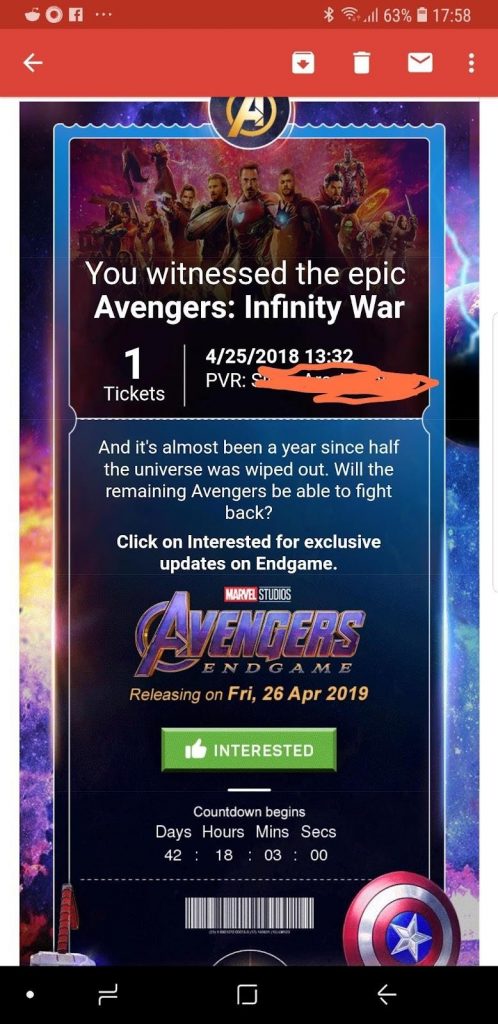
6. Counting milestones
Embracing each part of the journey the customers spend with you puts a highlight on your website. For instance, if someone has their birthday, send an email to wish them and some special offer for the day as a gift. Or if a customer completes a year with you, send them an appreciation email for being a valued customer.
Such emails encourage them to stay connected with you and show you care about them.
Such emails encourage them to stay connected with you and show you care about them.

7. Images
Show, don’t tell. Personalize your emails with an image or illustration to showcase your product or information related to it. People tend to retain more information when provided with a mixture of visual and textual facts.
You might use various features and images created specifically for the target audience to connect better with them.
There's also the option to generate art with AI for a truly unique image. By utilizing machine learning algorithms, you can create visually appealing and engaging images that help capture your audience's attention.
You might use various features and images created specifically for the target audience to connect better with them.
There's also the option to generate art with AI for a truly unique image. By utilizing machine learning algorithms, you can create visually appealing and engaging images that help capture your audience's attention.
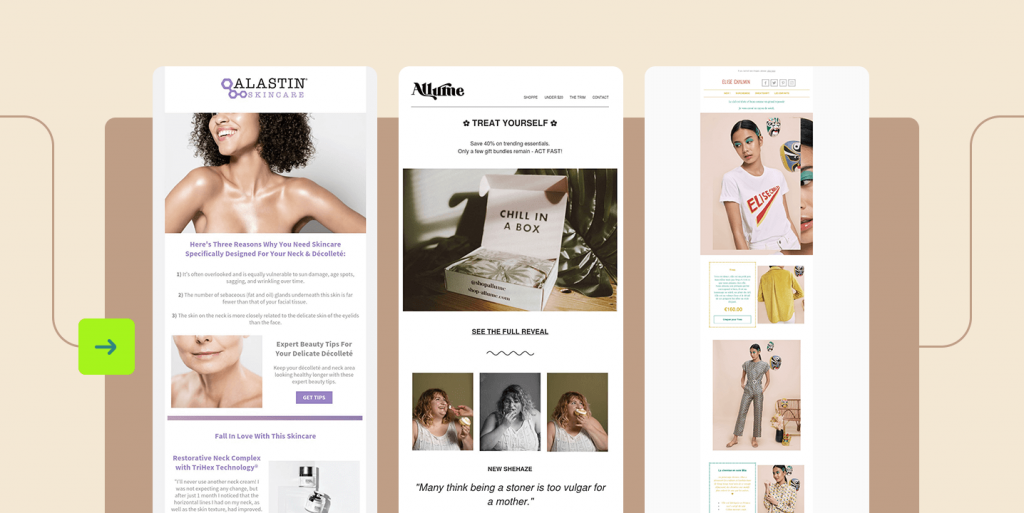
8. Ensuring a clear CTA
The CTA button is the most engaging technique used in an email. These buttons guide the prospects and customers to take the next step. It can direct your readers from the email to the target page. It can be a blog you want them to read, a recently added feature, a product page, to the checkout page, a feedback form, or a social media post depending on your campaign.
Personalization is one of the most effective ways to induce emotions, which encourages consumers to buy. When you personalize your outbound sales emails, they will appear more appealing and natural.
Personalization is one of the most effective ways to induce emotions, which encourages consumers to buy. When you personalize your outbound sales emails, they will appear more appealing and natural.

Wrapping it up
Now that we have a basic understanding of what email personalization strategy entails. It's your chance to shine, so go ahead and add a couple more methods if you're feeling extra creative.
Email personalization doesn't start when you hit the keyboard to write an email; it's a process that has evolved and continues to evolve beyond simply addressing your recipient by name. Tailoring emails with the right approach at the right time will allow you to go and grow a long way.
Email personalization doesn't start when you hit the keyboard to write an email; it's a process that has evolved and continues to evolve beyond simply addressing your recipient by name. Tailoring emails with the right approach at the right time will allow you to go and grow a long way.
Recent Posts
01 Jul 2025
Best Zoho CRM Integrations for Sales & Marketing in 2025
Discover the top Zoho CRM integrations in 2025 categorized by use case. Explore how each tool's key ...
01 Jul 2025
Sales Automation in 2025: The Guide to Close More Deals Faster
Struggling with manual sales workflows? Follow this guide to explore the sales automation use cases, ...
25 Jun 2025
Top 6 Email Finder APIs in 2025 for All Use Cases
Looking for a reliable Email Finder API? Explore the top 6 email finder APIs of 2025—compare key fea ...
17 Jun 2025
Top 10 Email Spam Checker Tools Tested & Reviewed (2025)
Check out the top 10 email spam checker tools to avoid junk folders. Compare features, ratings & use ...
06 Jun 2025
How To Create a Lead Magnet That Converts in 2025
Looking for more leads? Read how to create a high-converting lead magnet in 2025 with step-by-step g ...
Prospecting ,Email Finder & Email Verification Service
Prospecting ,Email Finder & Email Verification Service
Expand your reach by discovering and verifying the ideal prospects.
Sign up & get 100 free credits | No Credit Card required

